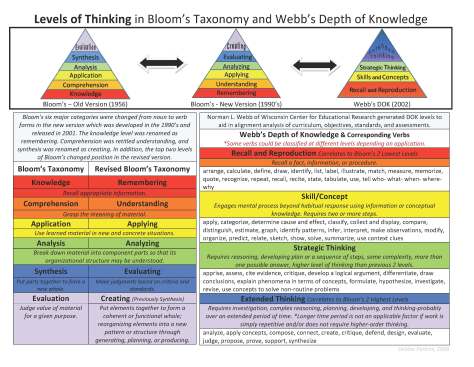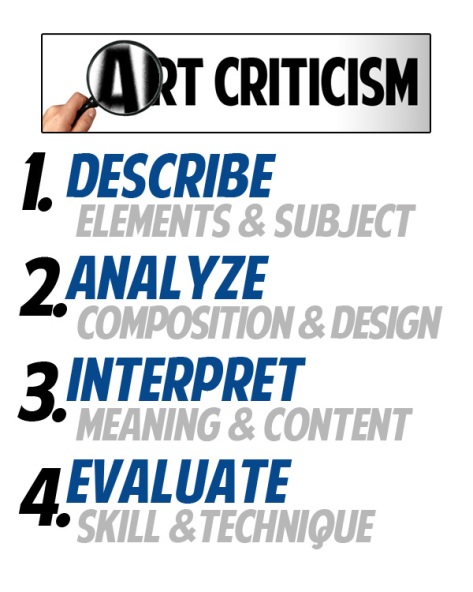The main theoretical underpinning of the outcomes-based curriculum is provided by Biggs (2003). He calls the model constructive alignment which he defines as:
…coherence between assessment, gt strategeachinies and intended learning outcomes in an educational programme. (McMahon & Thakore 2006)
source: http://www.ucdoer.ie/index.php/Using_Biggs%27_Model_of_Constructive_Alignment_in_Curriculum_Design/Introduction
As currently articulated, the model is attributed to Biggs (2003, 1999) but the essentials were formulated by Tyler (1949) some 50 years earlier – and elaborated in the 1980s by Shuell (1986). At its most basic, the model requires alignment between the three key areas of the curriculum, namely, the intended learning outcomes, what the student does in order to learn, how the student is assessed. This is expressed in Figure 1 with a concrete example given as Figure 2.
Figure 1: A Basic Model of an Aligned Curriculum.
Figure 2: An Example of Constructive Alignment in a Curriculum
Examples of Alignment from Different Modules
| Learning Outcomes: On completion of this module students should be able: |
Assessment Methods | Teaching/Learning Activities |
|---|---|---|
| To identify the main signs and symptoms of multiple sclerosis. | Multiple Choice Questions | Lecture on various signs/symptoms,In class exercises/quizzes on terminology. |
| To formulate end products using selected ingredients | Poster Display 15%Presentation of end product 85% | Lecture presenting case studies of the design history of some market leaders.Students plan own project and present as poster.
Student projects on food formulation. |
| To develop and identify an area for research in the discipline | 1,000 word research proposal | Presentation of examples of research questions,Student discussion groups on research areas. |
| To demonstrate effective presentational skills | In-class graded presentation | Practices sessions in the class,Peer-assessment, using set criteria, of others in class. |
| Title of Module: Evaluating and Reflecting on your Teaching. | ||
|---|---|---|
| Outcomes On completion of this module you should be able to: |
Assessment Critically reflective written report containing the following: |
Teaching / Learning Activities |
| Monitor, evaluate and reflect on your teaching and the learning of your students | Evidence of having completed the prescribed mentoring – observation cycleA reflective statement of personal and professional gains made from the peer observation process | Introductory Group Tutorial – Revision of critical reflection theory (from previous modules).Seminar: Introduction to Peer Observation and the use of a Learning Contract.
Peer mentor sessions. |
| Use a range of methods to gather student feedback. | Evidence of having received and responded to student feedbackA reflective statement of what has been achieved as a result of gathering feedback from students. | Workshop:Methods of Gathering Student Feedback
Project: Collecting Student Feedback (using a variety of methods) |
| Contribute to the debate on the links between research and teaching. | Formatively assessed by tutor comments in forum. (In preparation for formal assessment of this outcome in a future module.) | On line forum |
Biggs actually suggests that teaching and learning activities are designed second and the assessment regime third (page 30). If this sequence is adopted, it is important that activities are designed which enable students to learn how to demonstrate achievement at the highest level described by the outcomes. This can be done by focusing on the verbs within the outcomes that express “the very best understanding that could reasonably be expected” (page 28). (See Figure 3)
Appropriate verbs can be discovered or derived by relating the model to a learning taxonomy. The two most commonly used are that devised by Bloom (1956) as revised by Anderson et al (2001) and that devised by Biggs & Collis (1982). (See Figure 4)
Figure 3: Adapting the Model to Allow for Differential Levels of Achievement.
Figure 4: Relating the Constructive Alignment Model to Learning Taxonomies.
| Bloom’s Taxonomy (As revised by Anderson et al 2001) |
Biggs’ Proposed Levels of Attainment | Biggs & Collis’ SOLO Taxonomy |
|---|---|---|
| Synthesis / Creation design, organise, formulate, propose.Evaluation judge, appraise, evaluate, compare, assess. |
A: The very best understanding | Extended Abstract Thinking: theorise generalise reflect evaluate |
| Analysis distinguish, analyse, calculate, test, inspect.Application apply, use, demonstrate, illustrate, practice. |
B: Highly Satisfactory | Relational Thinking: explain analyse compare apply |
| Comprehension explain, describe, discuss, recognise. |
C: Quite Satisfactory | Multi-structural Thinking classify comment upon |
| Knowledge define, list, name, recall, record |
D: Just a Pass | Uni-structural state describe |
| E: Fail | Pre-structural |
A better fit with what Biggs says elsewhere in his book, however, is that the assessment regime needs to be thought out before the teaching and learning activities. This is because for students, assessment defines what is important in the curriculum and they will learn what they think will be assessed.
As Biggs put it:
… students learn what they think they will be tested on. This is backwash, when the assessment determines what and how students learn more than the curriculum does. In a poorly aligned system, where the test does not reflect the objectives, this will result in inappropriate surface learning. (Biggs 2003: 140)
Biggs notes that if the assessment regime does not properly reflect curriculum objectives then the result will be inappropriate “surface” learning. He then goes on to propose that educators use the inevitability backwash to secure effective educational reform.
You can’t beat backwash, so join it. Students will always second-guess the assessment task and then learn what they think will meet those requirements. But if those assessment requirements mirror the curriculum, there is no problem. Students will be learning what they are supposed to be learning. Ibid: 210.
This concept of backwash is a key element of, and justification for, the adoption of Bigg’s Model of Constructive Alignment because it is validated by a great deal of independent research (Atkins et al 1993, Ramsden 1992, Scouller 2000).
This does not, however, in anyway diminish the importance of the other two components of the curriculum. Any review or revision of any one of the three components of an aligned curriculum requires a matching review or revision of the other two. Where a curriculum is not aligned – i.e. where there is a discontinuity between any two of the components – it is likely that there will be a mismatch between intention and product.
At a more complex level, constructive alignment requires a balance and synergy between:
- the professional goals of the teachers
- the wants and needs of the students
- the curriculum
- the teaching methods used
- the assessment procedures used and the method or report results
- the psychological and social climate of the classroom (learning milieu)
- the psychological and social climate of the institution.
Each of these components needs to work towards the common goals.
Imbalance in the system will lead to poor teaching and surface learning. Non alignment is signified by inconsistencies, unmet expectations, and practices that contradict what we preach (Biggs 2003: 26)
Figure 5: Examples of Alignment from Different Modules
| Learning Outcomes: On completion of this module students should be able: |
Assessment Methods | Teaching/Learning Activities |
|---|---|---|
| To identify the main signs and symptoms of multiple sclerosis. | Multiple Choice Questions | Lecture on various signs/symptoms,In class exercises/quizzes on terminology. |
| To formulate end products using selected ingredients | Poster Display 15%Presentation of end product 85% | Lecture presenting case studies of the design history of some market leaders.Students plan own project and present as poster.
Student projects on food formulation. |
| To develop and identify an area for research in the discipline | 1,000 word research proposal | Presentation of examples of research questions,Student discussion groups on research areas. |
| To demonstrate effective presentational skills | In-class graded presentation | Practices sessions in the class,Peer-assessment, using set criteria, of others in class. |




 The Common Core Standards are the cornerstones of the Smarter Balanced and PARCC assessments, Webb’s Depth of Knowledge (scale of cognitive demand) and Blooms Revised Taxonomy (levels of intellectual ability) are the framework and the structures that will be used to evaluate students. Assessing curriculum, developing formative assessments, evaluation curriculum, and evaluation of students knowledge at the highest levels is being shared by two progressive cognitive matrices. Depth of knowledge, and complexity of knowledge is the heart of the more rigorous assessments being implemented in 2014. They share many ideas and concepts yet are different in level of cognitive demand, level of difficulty, complexity of verbs vs. depth of thinking required, and the scale of cognitive demand. Teachers need to learn how the frameworks are used to develop curriculum and how to use them to enhance instructions. Teachers and students can use Blooms Questions Stems and Webb’s DOK questions stems to create higher order thinking and improve achievement. 80% of the PARCC assessments will be based on the highest levels of blooms and the deepest levels of Webb’s DOK. Are you ready to use the DOK or Blooms daily in your class?
The Common Core Standards are the cornerstones of the Smarter Balanced and PARCC assessments, Webb’s Depth of Knowledge (scale of cognitive demand) and Blooms Revised Taxonomy (levels of intellectual ability) are the framework and the structures that will be used to evaluate students. Assessing curriculum, developing formative assessments, evaluation curriculum, and evaluation of students knowledge at the highest levels is being shared by two progressive cognitive matrices. Depth of knowledge, and complexity of knowledge is the heart of the more rigorous assessments being implemented in 2014. They share many ideas and concepts yet are different in level of cognitive demand, level of difficulty, complexity of verbs vs. depth of thinking required, and the scale of cognitive demand. Teachers need to learn how the frameworks are used to develop curriculum and how to use them to enhance instructions. Teachers and students can use Blooms Questions Stems and Webb’s DOK questions stems to create higher order thinking and improve achievement. 80% of the PARCC assessments will be based on the highest levels of blooms and the deepest levels of Webb’s DOK. Are you ready to use the DOK or Blooms daily in your class?




